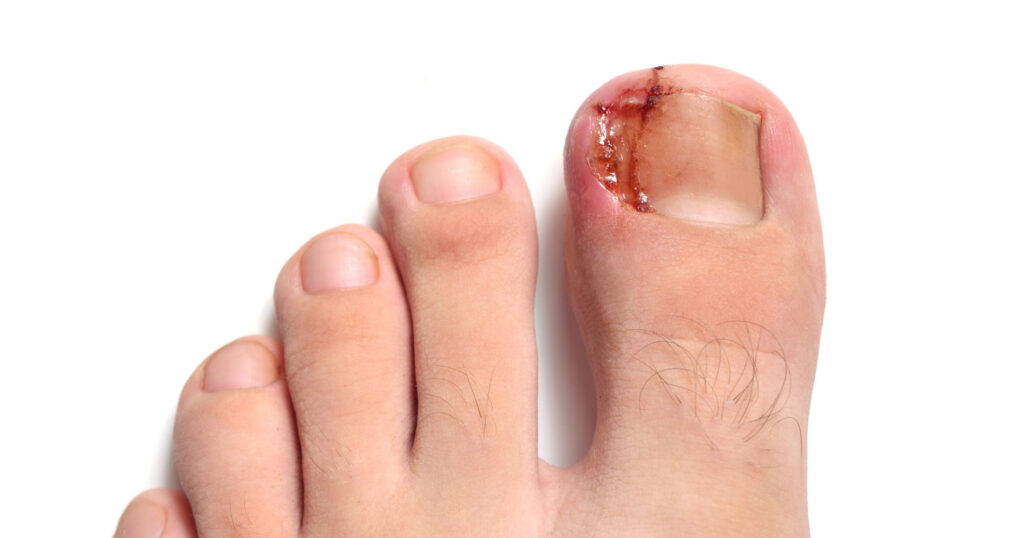Podiatry and painful nails
Have you suffered from ingrown nails before? If you have, you’ll know just how painful they can be. For some people, ingrown nails can be so excruciating that they affect your ability to walk and put pressure on your toe. For something that seems so small, they certainly can be a nuisance! Ingrown nails can occur in any age group, but are the most common in children and adolescents due to how quickly their feet grow and change. No matter your age, a podiatrist will be able to manage your ingrown nails with a number of treatments, ranging from conservative nail care to a nail avulsion surgical procedure.
What is an ingrown nail?
An ingrown nail is a condition where the corner or side of a toenail grows into the surrounding skin and soft tissue. This leads to the skin become red, aggravated, swollen and painful.Infected Ingrown Nails
In many cases, if the nail is left long enough without treatment it can pierce the skin and create a wound: often leading to a bacterial infection. Unlike a standard wound which will naturally heal and close up with time, the ingrown nail wound is unable to heal due to the toenail continuing to pierce the affected site. This is why many people can go through rounds of antibiotics without properly fixing the ingrown nail, as the wound will remain present until the nail edge has been removed from the skin!What Causes Ingrown Nails?
Like many conditions us podiatrists deal with, the cause of ingrown nails tend to be multifactorial and stem from a number of reasons. Some of these may include:- The shape of your nails: many people are born with involuted nails (nails that wrap around deep into the nail sulcus) and are naturally more likely to grow into the skin.
- Tight shoes: Shoes that are tight around your toes will put pressure on the nails as you walk – increasing the likelihood of them irritating the skin.
- Improper cutting of nails: If you cut your nails too far back or don’t cut all the way over the nail edge, you run the risk of developing an ingrown nail.
Symptoms of an Ingrown Nail
If you’ve had an ingrown nail before, you’ll know just how painful they can be. There are a large amount of nerve endings in your feet and toes, meaning they are much more sensitive to pain! Some common symptoms may include:- Swelling and redness around the sulcus of the nail.
- Throbbing throughout the day, particularly if pressure is applied.
- Hypergranulated tissue (bright red skin that grows over the nail due to trauma).
- Puss if an infection is present.
Treatment for Ingrown Nails
As discussed above, it is essential to remove the edge of the nail in order for the skin and soft tissue to recover. Your local podiatrist will be able to effectively cut out the nail edge and improve the chances of it growing back without complications. If the ingrown nail is too painful to cut near, we are able to use a local anaesthetic to numb the toe and remove the nail edge pain-free. For the management of ingrown nails over the long term, it will be essential to:- Have properly fitted shoes.
- Cut your toenails properly by following the natural curve of the nail.
- Don’t let your nails grow too long.



